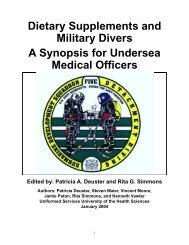Force Health Protection: Nutrition and Exercise Resource Manual
Force Health Protection: Nutrition and Exercise Resource Manual
Force Health Protection: Nutrition and Exercise Resource Manual
Create successful ePaper yourself
Turn your PDF publications into a flip-book with our unique Google optimized e-Paper software.
◆ Flexibility - Connective tissue around your joints can become<br />
less elastic with age. However, no measurable declines in<br />
flexibility will occur if you regularly perform stretching exercises.<br />
Maintaining your flexibility is important as this determines the<br />
range of motion of your joints <strong>and</strong> decreases the feeling of<br />
stiffness in your joints. Flexibility also serves an important role<br />
in injury prevention <strong>and</strong> may reduce symptoms of arthritis. (See<br />
Chapters 4 <strong>and</strong> 9.)<br />
Other fitness issues to be aware of as you age include<br />
the following:<br />
◆ Warm-Up <strong>and</strong> Cool-Down - Longer warm-up<br />
<strong>and</strong> cool-down times are needed to optimize<br />
performance as you age, particularly if you<br />
are participating in strenuous exercise. These<br />
longer warm-up <strong>and</strong> cool-down times will help<br />
prepare your body for the upcoming exercise<br />
<strong>and</strong> reduce your risk of injury (see Chapter 4).<br />
◆ Recovery from Workouts - You will need to<br />
allow for longer recovery times from strenuous workouts <strong>and</strong><br />
competition as you age. You may actually notice this before you<br />
notice a decline in your performance. Listen to your body <strong>and</strong><br />
allow for adequate recovery time by following a hard workout<br />
with a couple rest days or light workout days. In addition, allow<br />
your body adequate time to adapt to increases in your workout.<br />
Again, maintaining your intensity is more important than<br />
exercising more frequently to maintain your fitness. Also, pay<br />
attention to the warning signs of overtraining (see Chapter 13).<br />
◆ Recovery from Injuries - As with recovery from a strenuous<br />
workout, you will need more time to recover from training<br />
injuries. Be patient <strong>and</strong> allow yourself to fully recover. This will<br />
help you avoid future injuries (see Chapter 13).<br />
◆ Cross-Training - No specific exercise is better than another to<br />
offset all the health <strong>and</strong> fitness changes mentioned. However,<br />
many of these concerns can be addressed by cross-training, or<br />
altering the types of exercises you perform, throughout the week<br />
(see Chapter 5). By cross-training you can improve <strong>and</strong> maintain<br />
your aerobic fitness while recovering from intense workouts or<br />
while taking a break from weight-bearing exercises. This will<br />
help prevent overtraining <strong>and</strong> overuse injuries (see Chapter 13)<br />
while you remain physically active. Consider making crosstraining<br />
a regular practice in your exercise routine, if it is not<br />
already.<br />
120 <strong>Force</strong> <strong>Health</strong> <strong>Protection</strong>:




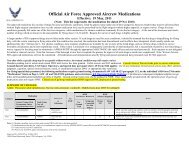
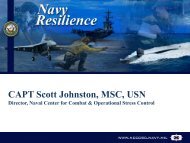
![Body Composition and Military [PDF] - Human Performance ...](https://img.yumpu.com/43269347/1/190x245/body-composition-and-military-pdf-human-performance-.jpg?quality=85)
![Tips for Grocery Shopping [PDF]](https://img.yumpu.com/37447379/1/190x245/tips-for-grocery-shopping-pdf.jpg?quality=85)
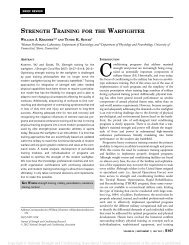
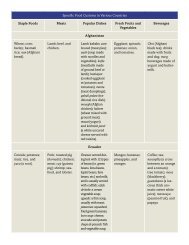
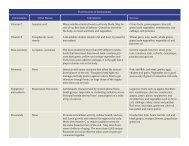
![Synthetic Drugs [PDF] - Human Performance Resource Center](https://img.yumpu.com/37447322/1/190x245/synthetic-drugs-pdf-human-performance-resource-center.jpg?quality=85)
